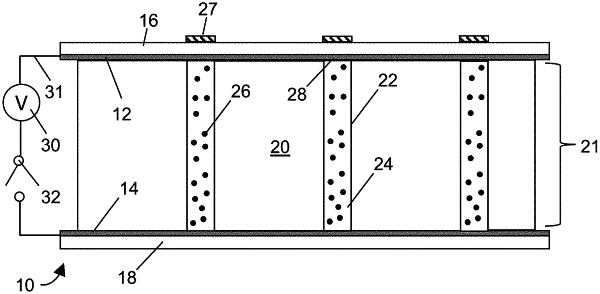| CPC G02B 27/30 (2013.01) [G02F 1/13338 (2013.01); G02F 1/133504 (2013.01); G02F 1/133606 (2013.01); G09G 3/3406 (2013.01)] | 11 Claims |

|
1. A method for collimating a light source, comprising:
providing a switchable light-collimating film between a viewer and a light source, the switchable light-collimating film including:
a first light-transmissive electrode layer,
a collimating layer having a thickness of at least 20 μm, and comprising a plurality of elongated chambers, with a portion of collimating layer between elongated chambers, each elongated chamber having an opening,
a bistable electrophoretic fluid comprising pigment particles disposed in each elongated chamber,
a sealing layer including light-reflective materials that seals the bistable electrophoretic fluid within at least one of the plurality of elongated chambers by spanning the opening of the elongated chamber, wherein the sealing layer provides a light-reflective surface aligned with the opening of each elongated chamber, and wherein the light-reflective surface does not substantially overlap with the portion of the collimating layer between elongated chambers, and
a second light-transmissive electrode layer, wherein the first and second light transmissive layers are disposed on either side of the collimating layer;
providing a voltage source operably coupled between the first light-transmissive electrode layer and the second light-transmissive electrode layer; and
providing a voltage impulse between the first light-transmissive electrode layer and the second light-transmissive electrode layer to cause the pigment particles to move from a first position adjacent the first light-transmissive electrode layer or adjacent the second light-transmissive electrode layer to a second position in which the pigment particles are dispersed throughout the volume of the elongated chambers, thereby collimating the light source as viewed by the viewer.
|